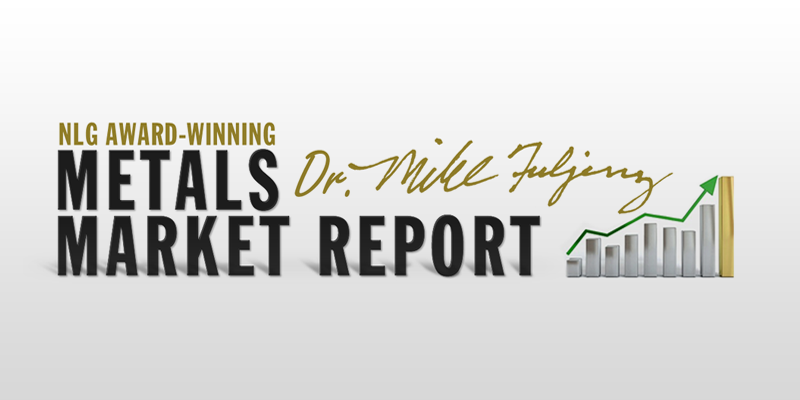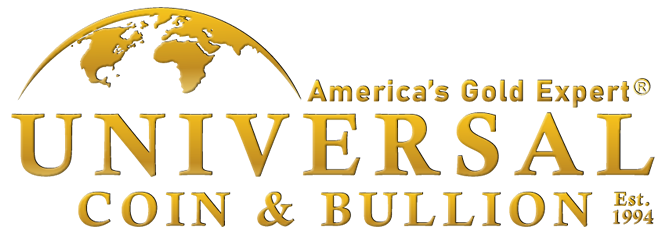
June 2025 - Week 2 Edition
What Pushed Silver Up Nearly $4, a Rate of Nearly 12%, in Early June?
June is “Busting Out All Over” for most of the precious metals (except for gold). In the first 10 days of June, we’ve seen double digit gains in silver, platinum and palladium, even while gold is up less than 2%:
| Precious Metal | June 1-10 | Full Year So Far |
| GOLD | +1.8% | +26.75% |
| SILVER | +11.5% | +26.75% |
| PLATINUM | +16.1% | +31.5% |
| PALLADIUM | +11.8% | +19.0% |
Silver Rose $1.65 on Monday, June 2, the first business day in June and it kept rising every day of the new month, seemingly energized by the prospect of a higher budget deficit this year. The current business-as-usual big-spending Congressional attitude is creating prospects of “stagflation” and higher deficits in a replay of the 1970s, which sent silver soaring from under $2 in 1973 to a peak of $50 in January of 1980. Gold is acting as more of a “crisis hedge” than inflation hedge, rising in a steadier long-term pattern but now they have risen by an identical rate for the year: At 26.75%.
On the surface, it looks like Silver and the Platinum Group Metals are finally catching up with gold but what took them so long? What might be the catalyst for the sudden explosion in silver and platinum and why isn’t gold following their lead this month? Good questions. We have some preliminary answers. I can’t say we have all the answers yet and sometimes it doesn’t matter why. We can just sit back and enjoy the ride but it’s always better to find out more information so that we can beware any false signals.
Platinum is up due to a projected supply deficit this year and also due to the threatened tariffs, which have resulted in some unusual advance trading and stockpiling of platinum ahead of the potential tariffs implementation. (This is what happened to gold in the first quarter.) The World Platinum Investment Council (WPIC) projects a platinum supply deficit of nearly one million ounces in 2025, reflecting strong and rising demand combined with naturally limited new output. Platinum is primarily used in catalytic converters for vehicles and industry, plus some uses for laboratory equipment and investment uses in coins and exchanged traded funds (ETFs).
Silver has more of an inflation-hedge component, so you could say that it is belatedly catching up with gold. Some analysts theorize that the sudden cooling of the “bromance” between the aggressive cost-cutting DOGE director, Elon Musk, and the more pragmatic Trump team working with Congress on the “big beautiful bill” has limited most of the president’s initial promise to cut high deficit spending in his first year. He is thereby insured high and rising deficits this year, and maybe next year. Such an outlook would virtually guarantee a decline in the dollar and higher inflation, helping gold and silver.
At the same time, this scenario would slow down the economy by keeping interest rates high. Then the service on the federal debt could remain high, thereby crowding out free enterprise from access to that capital, limiting growth, and perhaps threatening a recession going into the mid-term elections. This opens up the gates for the old “stagflation” scenario of 50 years ago, when gold and silver soared.
My Recommendation of the Week is the Type 1 American Gold Eagle $25 Set
In 1933, as part of the effort to deal with the fallout from the great depression, President Franklin D. Roosevelt issued Executive Order 6102, requiring all citizens to turn in their gold coins, bullion and gold certificates, with some collectible exceptions, in excess of $100 to the federal government.
In exchange, the government paid citizens $20.67 for each ounce of the gold they turned in. Less than a year later, Roosevelt raised the price to $35 per ounce. For over 50 years the country didn't release a single piece of regular issue, legal tender gold.
Then, President Ronald Reagan signed the Gold Bullion Act of 1985 into law. A year later, in 1986, the new American Gold Eagle was created and rose to become the most popular series of coins in the world.
The Eagles were minted in four different denominations, the $5, $10, $50 and the first-ever $25 piece of money in U.S. history. The front, or obverse, of the coin features the legendary Augustus Saint-Gaudens’ design that was first featured on the iconic $20 Double Eagle. The reverse of the coin featured the award-winning family unity design created by Miley Busiek.
For the first six years, from 1986 to 1991, these coins featured the date written in Roman numerals. Due to massive appeal from both collectors and investors, these Type I American Gold Eagle coins have become highly sought after. Because of their low mintage numbers at the time and the rush to buy them at the time, the $25 denomination coins have become quite difficult to acquire. As a result of their popularity and limited supply these coins have become some of the strongest performing gold coins on the market.
Right now, we have a small number of the complete $25 Type I American Gold Eagle sets from 1986 to 1991. While past performance never guarantees future performance, I expect the value of these treasures to continue to increase. Call your representative today to add one to your collection or portfolio.
The May Consumer Price Index (CPI) is Released…But Can We Trust It?
Speaking of inflation, the Consumer Price Index (CPI) came out Wednesday morning and the Producer Price Index will be released on Thursday. The CPI for May rose only 0.1% in the headline number and in the “core” number. The index itself is at 321.465, up from 10 in 1913, so we’re up 32-fold in 112 years.
That’s another healthy report for lower inflation in 2025 but this Monday’s Wall Street Journal added two cautionary articles about this week’s inflation reports. The first article was perched on the top of Page 1 in the Business & Finance section: “Inflation Casts Shadow on the Markets,” quoting the University of Michigan’s May consumer sentiment survey. That survey found that average Americans expect their prices to surge by about 6.6% over the next year, up from 6.5% in April. Both numbers are the highest expectation figures since inflation was at double digits back in 1981. So … U.S. consumers clearly do not trust the CPI data.
Even though these lofty consumer inflation expectations fly in the face of year-over-year inflation at 2.3% in April and May – the lowest rate since January 2021 - Biden’s first month in office – these expectations can become self-fulfilling if workers demand higher wages and businesses raise prices to protect profits.
The second Journal article from Monday, June 9 (from their Investing Monthly section) profiled a newly retired couple discussing their concerns about inflation. The husband (Steve) was concerned, and the wife (Karen) not so worried. It’s a fine way to present the arguments since retirees are able to rely on Cost of Living Allowances (COLAs) in Social Security, rising stock markets and lower tax rates, but now they must be concerned about whether these monthly inflation numbers are accurate due to another Journal article last week in which some economists are beginning to question the accuracy of this year’s inflation statistics after staffing shortages have handcuffed the Bureau of Labor Statistics from making a full survey of nationwide prices each month. In the last inflation report (for April), government statisticians said they had to use a less precise method for guessing price changes than they have in the past.
When asked about this problem, the BLS stated, “The CPI temporarily reduced the number of outlets and quotes it attempted to collect, due to a staffing shortage in certain CPI cities” in April. “These procedures will be kept in place until the hiring freeze is lifted, and additional staff can be hired and trained.”
All statements, opinions, pricing, and ideas herein are believed to be reliable, truthful and accurate to the best of the Publisher’s knowledge at this time. They are not guaranteed in any way by anybody and are subject to change over time. The Publisher disclaims and is not liable for any claims or losses which may be incurred by third parties while relying on information published herein. Individuals should not look at this publication as giving finance or investment advice or information for their individual suitability. All readers are advised to independently verify all representations made herein or by its representatives for your individual suitability before making your investment or collecting decisions. Arbitration: This company strives to handle customer complaint issues directly with the customer in an expeditious manner. In the event an amicable resolution cannot be reached, you agree to accept binding arbitration. Any dispute, controversy, claim or disagreement arising out of or relating to transactions between you and this company shall be resolved by binding arbitration pursuant to the Federal Arbitration Act and conducted in Beaumont, Jefferson County, Texas. It is understood that the parties waive any right to a jury trial. Judgment upon the award rendered by the Arbitrator may be entered in any court having jurisdiction thereof. Reproduction or quotation of this newsletter is prohibited without written permission of the Publisher.



